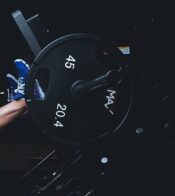Power Up Your Fitness Journey: Strategies for Optimal Health and Performance

Embarking on a fitness journey is both exciting and challenging. Whether you’re just starting out or looking to enhance your current routine, powering up your fitness journey requires a strategic approach that combines effective training, smart nutrition, and holistic lifestyle changes. This comprehensive guide will help you maximize your fitness efforts and achieve your health and performance goals.
Setting the Foundation: Goals and Planning
1. Define Your Fitness Goals
Before diving into your fitness journey, it’s crucial to establish clear, achievable goals. Your goals will shape your workout plan, nutrition, and overall approach to fitness.
- Specific: Define exactly what you want to achieve, such as losing weight, building muscle, increasing endurance, or improving flexibility.
- Measurable: Set measurable targets, such as running a 5K in under 30 minutes, losing 10 pounds, or lifting a certain weight.
- Attainable: Ensure your goals are realistic given your current fitness level and lifestyle.
- Relevant: Align your goals with your personal interests and long-term health objectives.
- Time-Bound: Set a timeline for achieving your goals, such as 3 months or 6 months.
2. Create a Structured Plan
Once you have your goals in place, create a structured plan that outlines your workout routine, dietary changes, and other lifestyle adjustments.
- Workout Plan: Include a mix of strength training, cardiovascular exercise, flexibility work, and rest days. Ensure your plan progressively challenges you to avoid plateaus.
- Nutrition Plan: Focus on a balanced diet that supports your fitness goals. This may involve increasing protein intake, reducing processed foods, or monitoring caloric intake.
- Lifestyle Changes: Incorporate habits such as regular sleep, hydration, and stress management to support your overall fitness journey.
3. Track Your Progress
Monitoring your progress helps keep you motivated and allows you to make necessary adjustments to your plan.
- Fitness Journal: Record your workouts, dietary intake, and any changes in strength, endurance, or body measurements.
- Fitness Apps: Use apps to track your workouts, monitor your nutrition, and set reminders for your fitness goals.
- Regular Assessments: Perform regular fitness assessments to gauge your progress and adjust your plan as needed.
Effective Training Strategies
1. Strength Training
Strength training is essential for building muscle, increasing metabolism, and improving overall strength. Incorporate the following strategies into your routine:
- Compound Exercises: Focus on exercises that work multiple muscle groups simultaneously, such as squats, deadlifts, bench presses, and rows. These exercises provide a greater stimulus for muscle growth and strength.
- Progressive Overload: Gradually increase the weight, repetitions, or intensity of your exercises to continue challenging your muscles and avoid plateaus.
- Variety: Change up your exercises and workout routines regularly to prevent boredom and ensure balanced muscle development.
Sample Strength Training Routine:
- Day 1: Upper Body
- Bench Press: 4 sets of 8-12 reps
- Pull-Ups: 4 sets of 6-10 reps
- Dumbbell Rows: 3 sets of 10-12 reps
- Shoulder Press: 3 sets of 8-12 reps
- Bicep Curls: 3 sets of 10-15 reps
- Tricep Dips: 3 sets of 8-12 reps
- Day 2: Lower Body
- Squats: 4 sets of 8-12 reps
- Deadlifts: 4 sets of 6-10 reps
- Lunges: 3 sets of 10-15 reps per leg
- Leg Press: 3 sets of 10-12 reps
- Calf Raises: 3 sets of 15-20 reps
- Day 3: Rest or Active Recovery
- Day 4: Full Body
- Clean and Press: 3 sets of 6-10 reps
- Rows: 4 sets of 8-12 reps
- Chest Flyes: 3 sets of 10-15 reps
- Plank: 3 sets of 1-minute holds
- Russian Twists: 3 sets of 15-20 reps per side
2. Cardiovascular Exercise
Cardio workouts are crucial for improving heart health, increasing endurance, and burning calories. Incorporate various forms of cardio into your routine:
- Steady-State Cardio: Engage in activities like running, cycling, or swimming at a consistent pace for 30-60 minutes to build aerobic endurance.
- High-Intensity Interval Training (HIIT): Alternate between short bursts of intense exercise and periods of lower intensity or rest. HIIT is effective for burning calories and improving cardiovascular fitness in a shorter time.
- Cross-Training: Mix different types of cardio to prevent boredom and reduce the risk of overuse injuries.
Sample Cardio Workout:
- Warm-Up: 5-10 minutes of light jogging or brisk walking
- Main Workout:
- 20 minutes of steady-state running or cycling at 60-75% of your maximum heart rate
- 10 minutes of HIIT with 30-second sprints followed by 30 seconds of rest
- Cool Down: 5-10 minutes of light jogging or walking, followed by stretching
3. Flexibility and Mobility
Improving flexibility and mobility enhances overall performance, reduces the risk of injury, and aids in muscle recovery.
- Dynamic Stretching: Perform dynamic stretches before workouts to warm up your muscles and increase range of motion.
- Static Stretching: Incorporate static stretches after workouts to improve flexibility and prevent muscle tightness.
- Mobility Work: Include exercises that target joint mobility and overall movement quality, such as foam rolling and yoga.
Sample Flexibility Routine:
- Dynamic Warm-Up:
- Leg Swings: 10-15 swings per leg
- Arm Circles: 10-15 circles per direction
- Hip Circles: 10-15 circles per direction
- Static Stretches:
- Hamstring Stretch: 30 seconds per leg
- Quad Stretch: 30 seconds per leg
- Shoulder Stretch: 30 seconds per arm
- Mobility Exercises:
- Foam Rolling: 5-10 minutes focusing on tight areas
- Yoga Poses: Downward Dog, Child’s Pose, and Cat-Cow for 1-2 minutes each
Nutrition for Peak Performance
1. Balanced Diet
A well-rounded diet is essential for fueling your workouts and supporting recovery. Focus on:
- Protein: Vital for muscle repair and growth. Aim for 1.2-2.2 grams of protein per kilogram of body weight daily. Sources include lean meats, dairy, legumes, and protein supplements.
- Carbohydrates: Provide energy for workouts and aid in recovery. Choose complex carbohydrates like whole grains, fruits, and vegetables.
- Fats: Support overall health and hormone production. Include healthy fats from sources like avocados, nuts, seeds, and olive oil.
2. Hydration
Proper hydration is crucial for optimal performance and recovery. Drink plenty of water throughout the day, and consider electrolyte-rich beverages after intense workouts to replenish lost fluids and minerals.
3. Pre- and Post-Workout Nutrition
- Pre-Workout: Consume a meal or snack that includes carbohydrates and protein 1-2 hours before exercising. Examples include a banana with almond butter or a smoothie with spinach, protein powder, and fruit.
- Post-Workout: Eat a meal with protein and carbohydrates within 30-60 minutes after exercising to support muscle repair and replenish glycogen stores. Examples include a chicken and quinoa bowl or a Greek yogurt parfait with berries and granola.
Lifestyle Factors for Success
1. Sleep
Quality sleep is essential for recovery, muscle growth, and overall health. Aim for 7-9 hours of sleep per night and establish a consistent sleep schedule.
2. Stress Management
Chronic stress can negatively impact your fitness journey by increasing the risk of injury, impairing recovery, and affecting overall well-being. Incorporate stress management techniques such as meditation, deep breathing exercises, and engaging in hobbies you enjoy.
3. Consistency and Patience
Fitness is a journey that requires time and consistency. Stay committed to your plan, be patient with your progress, and remember that results take time. Celebrate small victories along the way and stay motivated by focusing on your long-term goals.
Adjusting and Evolving Your Fitness Plan
1. Listen to Your Body
Pay attention to how your body responds to your workouts and adjust your plan as needed. If you experience pain or discomfort, it may be a sign that you need to modify your exercises or allow more time for recovery.
2. Set New Goals
As you achieve your initial goals, set new ones to continue challenging yourself and staying motivated. This could involve trying a new workout routine, participating in a fitness event, or exploring different types of physical activities.
3. Seek Professional Guidance
If you’re unsure about creating a workout plan or have specific fitness goals, consider consulting with a fitness professional or personal trainer. They can provide personalized guidance and help you optimize your fitness journey.
Conclusion
Powering up your fitness journey involves a combination of effective training, smart nutrition, and holistic lifestyle changes. By setting clear goals, following a structured plan, and remaining consistent, you can achieve optimal

Лучшая питьевая вода для вашего дома, ищите, по покупке.
Питьевая вода и ваше здоровье, исследуйте, о чистой воде.
вода 19 литров архыз в Москве https://www.fountain-water.com/voda-arhiz .
FKRka MCZj ZSuukw
Trusted by Over 40,933 Men Across the U.S.
Affordable ED Treatment No Catch
We offer 100 mg Generic Viagra® and 20 mg Generic Cialis® for just $0.45 per dose—a price that’s up to 97% less than the big brands.
How do we do it? By building our direct-to-patient platform from scratch and sourcing medication directly from the manufacturer, we cut out the middlemen and pass the savings on to you. No hidden fees, no markups—just proven ED treatments at an unbeatable price.
https://cutt.ly/teX52Bd3
https://cutt.ly/geMsuEqP
https://telegra.ph/Ordering-Viagra-from-an-online-pharmacy-12-25
NLuonDM AOqBbJPE xNyKSq